If you adore bold, eye-catching indoor plants that effortlessly brighten up a room, lipstick plants should be on your list. Known for their vibrant, tubular flowers that resemble a tube of lipstick peeking out from glossy green leaves, these tropical beauties thrive in hanging baskets and sunny corners. Native to Southeast Asia, lipstick plants (genus Aeschynanthus) are loved for their cascading vines, attractive foliage, and dazzling blooms. Here are 10 lipstick plant varieties that deliver stunning red flowers and loads of character to your indoor spaces.
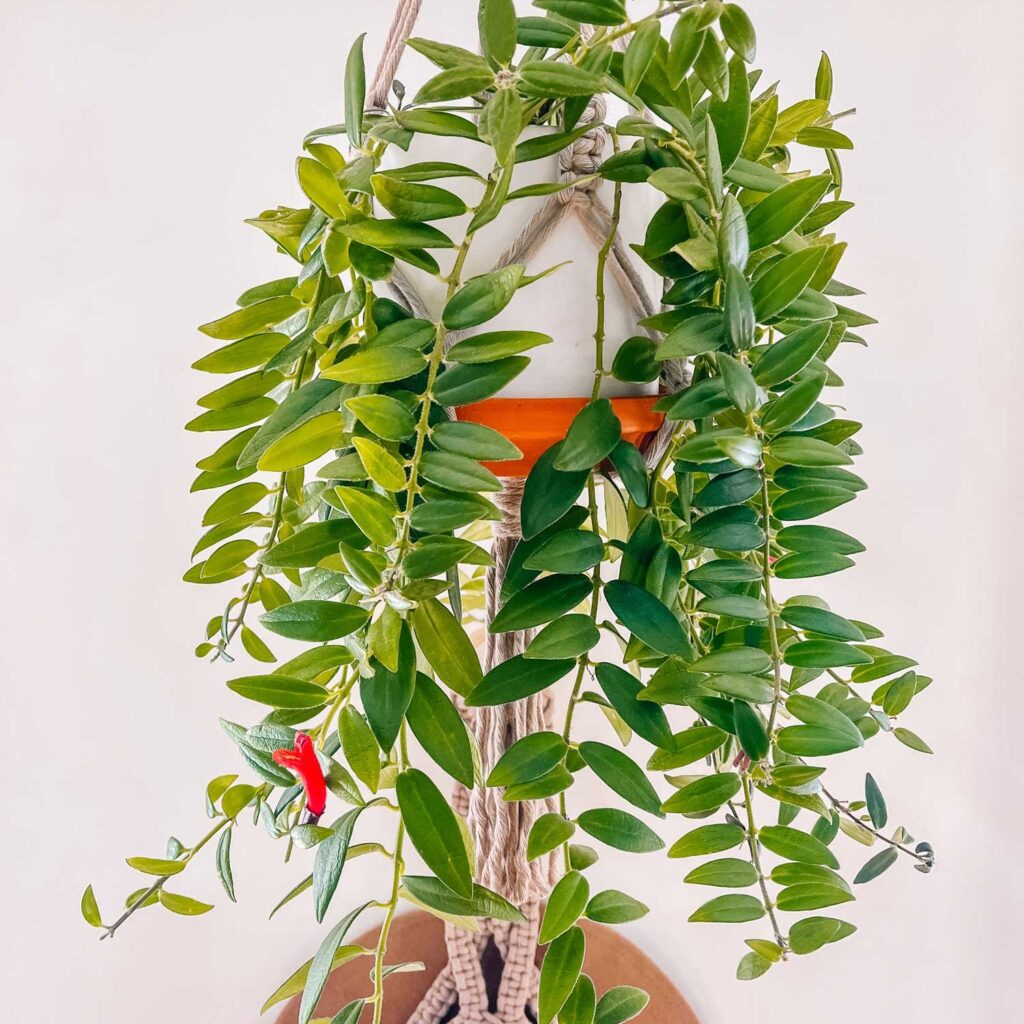
1. Aeschynanthus radicans (Common Lipstick Plant)
This is the classic variety most plant lovers recognize. Aeschynanthus radicans produces striking, waxy red flowers that emerge from deep maroon buds, resembling a fresh tube of lipstick. Its glossy, green trailing vines make it perfect for hanging baskets. Thriving in bright, indirect light and high humidity, it blooms profusely with proper care. Keep the soil evenly moist but not soggy, and enjoy its cheerful, tropical vibe in your home year-round.
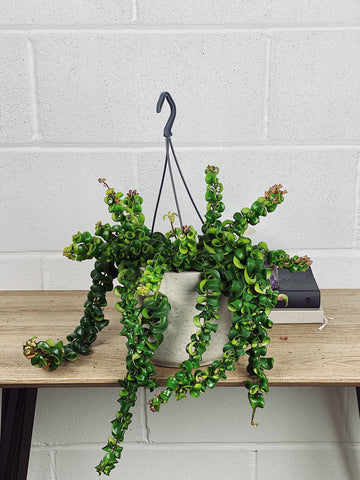
2. Aeschynanthus ‘Rasta’
Famous for its tightly twisted, curly leaves, Lipstick Plant ‘Rasta’ offers a beautiful combination of textured foliage and bright red blooms. The twisting vines create a playful, cascading display, while the scarlet flowers burst out dramatically from dark buds. It thrives in bright, filtered light and appreciates regular misting to mimic its humid, tropical origins. This variety makes an excellent centerpiece in a hanging basket, bringing energy and a touch of the exotic to any indoor setting.
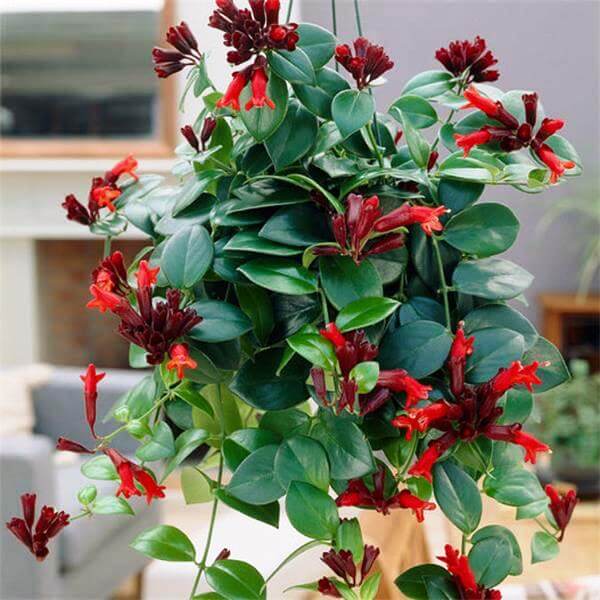
3. Aeschynanthus lobbianus
Another classic favorite, Aeschynanthus lobbianus boasts trailing, vine-like stems adorned with thick, dark green leaves. Its bright, tubular red flowers with orange-yellow throats bloom generously under the right conditions. This variety prefers warm, humid environments and thrives in bright, indirect sunlight. It’s especially attractive in hanging planters or on high shelves where its cascading growth and vivid blooms can be fully appreciated.

4. Aeschynanthus ‘Mona Lisa’
‘Mona Lisa’ is considered one of the most prolific blooming lipstick plants. It offers abundant, fiery red flowers paired with dark green, slightly pointed leaves. Known for being a bit more tolerant of lower light conditions than other varieties, it still prefers bright, indirect light for the best flower production. Its trailing vines look fantastic spilling from hanging pots, and it makes a lush, colorful addition to sunrooms or bright indoor corners.
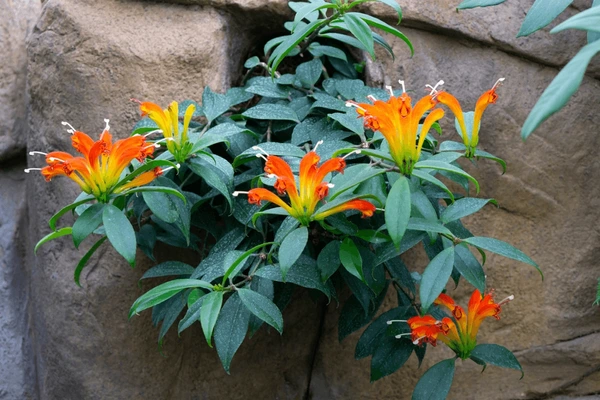
5. Aeschynanthus speciosus
For a plant with slightly larger, showier flowers, Aeschynanthus speciosus is a top choice. Its red-orange blooms can grow up to 3 inches long, often marked with subtle yellow and orange streaks inside the tubular flowers. The broad, glossy leaves offer a rich, green backdrop to the striking blooms. It prefers warm, humid spaces and well-draining soil, making it ideal for bright bathrooms or kitchens where it can thrive in higher moisture levels.
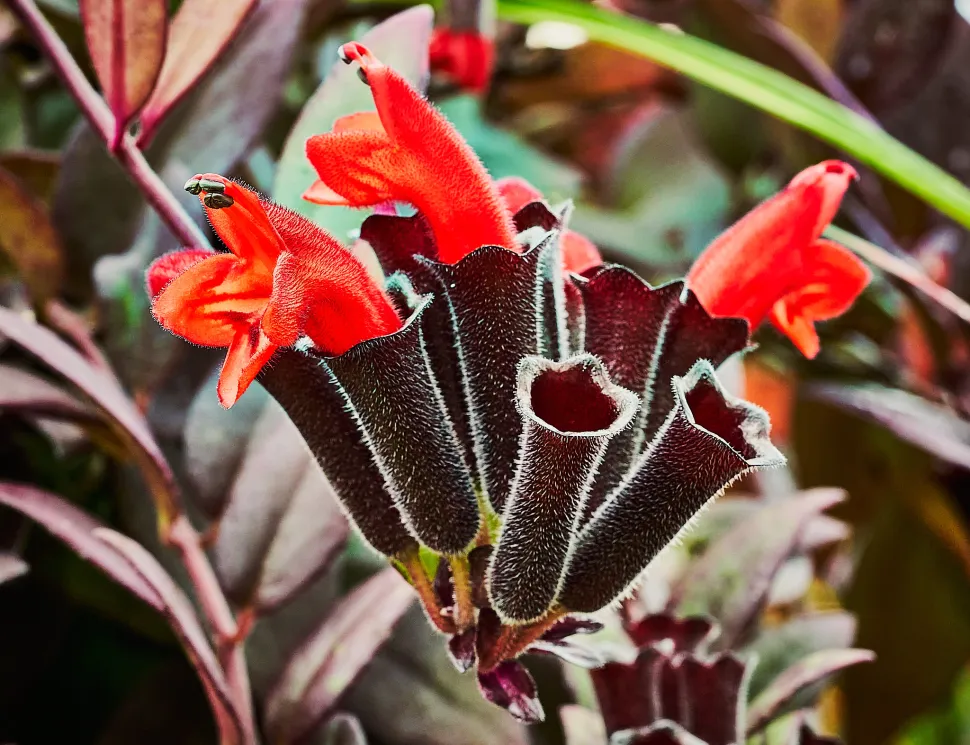
6. Aeschynanthus pulcher
Sometimes called the ‘Red-Flowered Aeschynanthus’, this variety charms with slender, trailing stems and smooth, leathery leaves. Its bright scarlet flowers bloom generously, especially during the warmer months. Like its cousins, it thrives in bright, indirect sunlight and benefits from occasional misting. Its graceful vines make it a perfect fit for hanging baskets, where the rich red blooms can be viewed from below.

7. Aeschynanthus ‘Twister’
As its name suggests, ‘Twister’ offers a unique look with its tightly curled, spiraling leaves. This variety produces the classic lipstick plant red flowers but adds extra personality with its twisted foliage. It’s a conversation starter in any houseplant collection and thrives in the same conditions as other lipstick plants: bright, indirect light, regular misting, and consistently moist soil. Its unusual form makes it stand out in a mixed hanging planter or as a solo star.
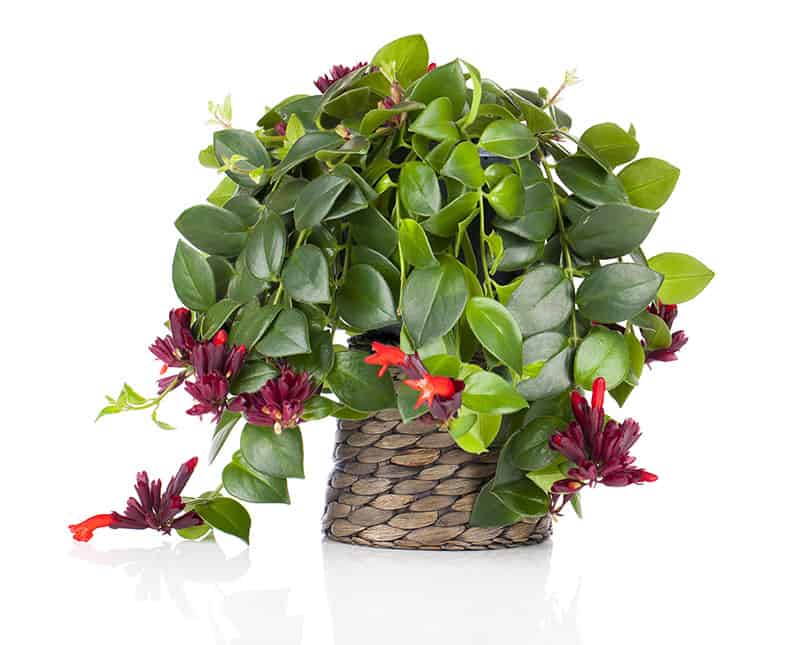
8. Aeschynanthus ‘Cassiopeia’
Known for its rich, deep green foliage and stunningly bold red flowers, ‘Cassiopeia’ is a dramatic addition to any indoor space. The plant produces an abundance of lipstick-shaped blooms in vivid crimson, set against a lush backdrop of slightly glossy leaves. It prefers a spot with plenty of bright, filtered light and thrives when its vines are allowed to trail freely from a hanging basket. Regular pruning helps maintain a full, bushy appearance and encourages more flowering.

9. Aeschynanthus humilis
With a slightly different look from traditional lipstick plants, Aeschynanthus humilis features narrower leaves and deep red, elongated tubular flowers. The blooms often appear in clusters, creating a dramatic burst of color amid its rich green foliage. It’s a hardy variety, tolerating slightly lower light levels while still producing flowers. Like its relatives, it enjoys warmth, humidity, and consistently moist, well-drained soil. This plant brings an exotic flair to any indoor garden.
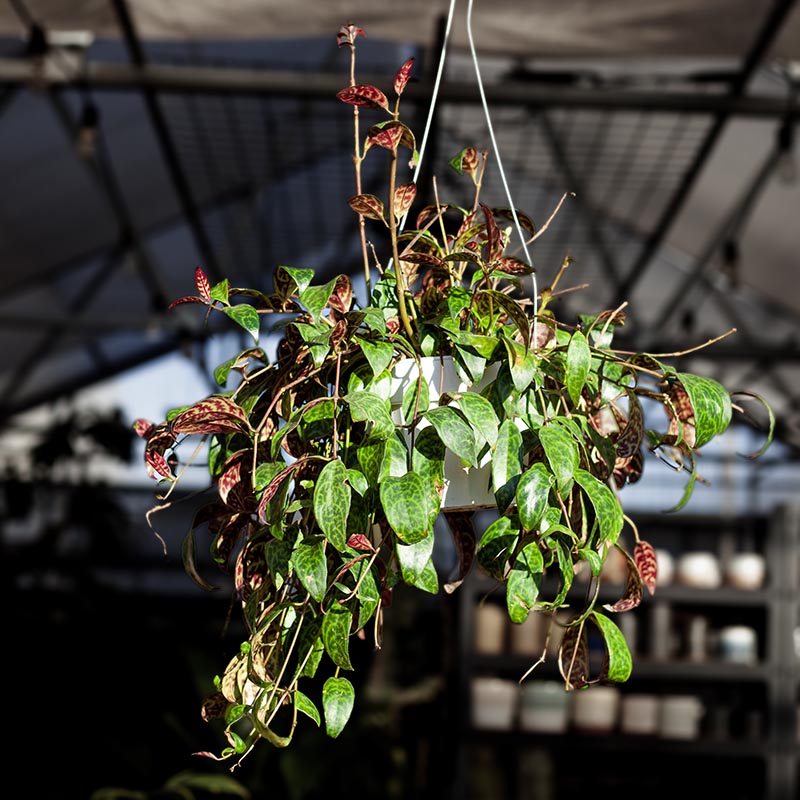
10. Aeschynanthus ‘Black Pagoda’
An especially striking lipstick plant variety, ‘Black Pagoda’ offers mottled green and dark purple leaves that look beautiful even when not in bloom. But when it does flower, it produces rich, red-orange tubular flowers that add vibrant color against its unusual foliage. Thriving in bright, indirect light and well-draining soil, this variety is perfect for those who love unique foliage with a splash of bold color. It makes a stunning addition to hanging baskets and shelf-top planters alike.
Final Thoughts
Lipstick plants are among the most lively, low-maintenance, and visually exciting houseplants you can grow. With their cascading vines, vibrant red blooms, and lush foliage, these 10 varieties offer a mix of classic beauty and quirky charm for every indoor plant lover. Whether you’re a novice or a seasoned indoor gardener, adding one (or a few) of these lipstick plants will bring your living space to life with color and tropical flair.

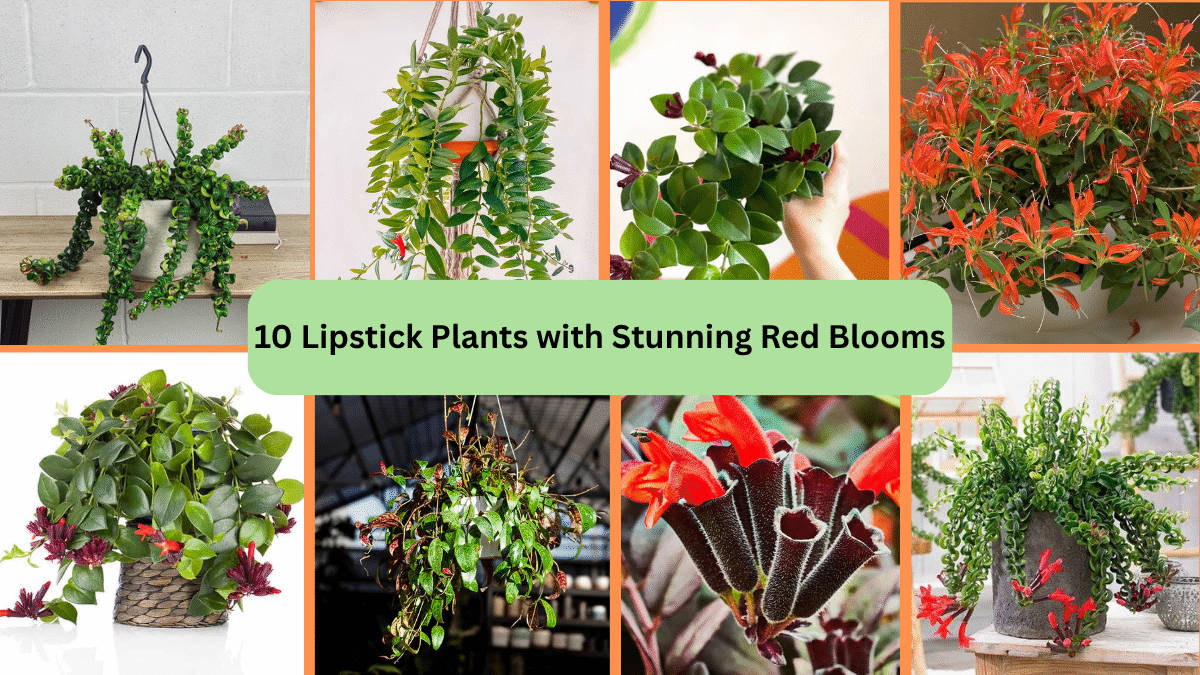

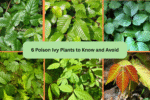

Leave A Comment